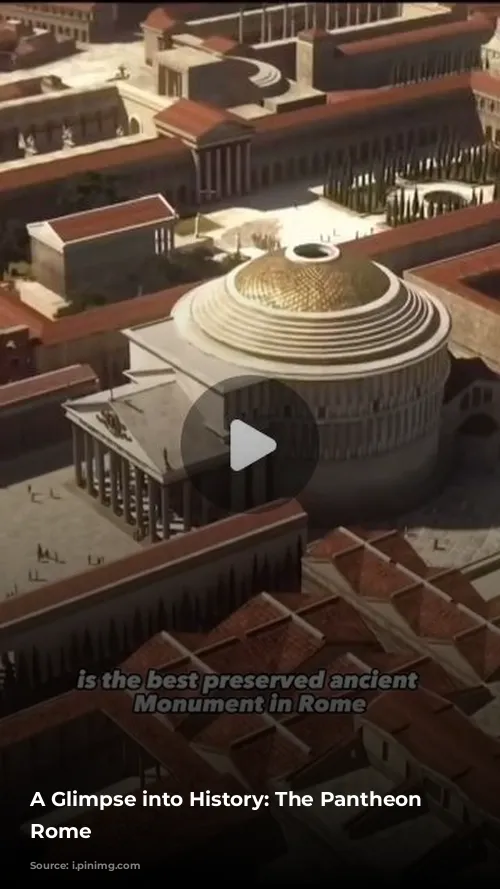The Pantheon, a testament to Roman ingenuity and architectural prowess, stands proudly in the heart of Rome. It’s a captivating edifice, effortlessly blending history, art, and spirituality. This magnificent structure invites you to step back in time, to a period of Roman grandeur and exploration.
From Temple to Basilica: A Journey Through Time
The Pantheon’s tale unfolds with a fascinating transformation. Originally envisioned as a temple dedicated to multiple deities, particularly the god Mars, it was a place where Romans gathered to offer prayers and sacrifices. Temples were essential to Roman religion, reflecting their beliefs and values. However, with the rise of Christianity, Rome embraced a new faith.
In the 4th century, Christianity was adopted as the official religion of the Roman Empire. This shift brought about profound changes, leading to the gradual decline of pagan practices. Many pagan temples, including the Pantheon, were either closed or repurposed as Christian churches.
The Pantheon’s most significant change occurred in the 6th century when it was gifted to Pope Boniface IV by the Byzantine Emperor Phocas. The Pope consecrated the structure to the Virgin Mary and all Christian martyrs, marking a pivotal moment in Rome’s transition to Christianity. This conversion transformed the Pantheon from a place of pagan worship into a center for Christian faith, reflecting the evolving religious landscape of the city.
A Dome that Defies Time: The Pantheon’s Architectural Marvel
The Pantheon is renowned for its impressive dome, a testament to Roman engineering and architectural brilliance. It’s a masterpiece of construction, capturing the essence of Roman architectural ingenuity. The dome’s hemispherical shape, resembling half of a sphere, creates a sense of spaciousness and harmony within the Pantheon. Its expansive diameter of 43.3 meters makes it the largest unreinforced concrete dome in the world, showcasing the Roman mastery of concrete construction.
The dome’s oculus, a circular opening at its apex, adds to its magnificence. It floods the Pantheon’s interior with natural light, creating an ethereal ambiance that shifts throughout the day. This breathtaking feature also serves as a natural ventilation system, ensuring a pleasant atmosphere within the structure.
The Pantheon’s dome is a testament to the Roman’s remarkable ability to harness their knowledge of materials and construction techniques. Their use of a concrete mixture of lime, pumice, and volcanic ash, combined with strategic layering of concrete, resulted in a remarkably strong and enduring structure. This masterpiece of engineering has stood the test of time, surviving earthquakes, weathering, and historical events for over two millennia.
A Timeless Icon: A Must-Visit During Your Roman Excursion
The Pantheon’s allure extends beyond its architectural brilliance. It’s a place where art and history intertwine, serving as an exhibition space, a venue for ceremonies, and a center for cultural and religious events. The Pantheon has witnessed centuries of change, adapting its purpose while remaining a symbol of Rome’s cultural and historical richness.
The Pantheon’s enduring legacy is undeniable. Its architectural design and grandeur have inspired countless buildings throughout the world, from Christian churches to royal palaces. It is a beacon of classical architecture, a timeless tribute to the Roman Empire’s power and ingenuity.
For visitors to Rome, the Pantheon is a must-see destination. Nestled just a short walk from the 9Hotel Cesàri, the Pantheon is easily accessible. The hotel’s staff is ready to guide you through this remarkable structure, providing insights into its history and architectural wonders. A comprehensive tour of the Pantheon takes about an hour, offering an unforgettable journey through time. While entry is currently free, be aware that admission fees are likely to be introduced in the near future.
After your visit, explore the nearby streets, including the Trevi Fountain, another iconic Roman landmark. The Pantheon is a timeless gem that encapsulates the essence of Roman culture and architecture. Don’t miss the opportunity to experience its grandeur and explore its rich history.
